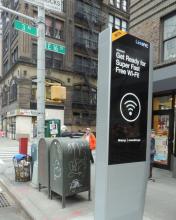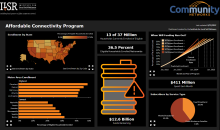New York City’s Ambitious Broadband Plan Is A Shadow Of Its Former Self
In 2020, New York City officials unveiled a massive new broadband proposal they promised would dramatically reshape affordable broadband access in the city.
Instead, the program has been steadily and quietly dismantled, replaced by a variety of costly half-measures that critics say don’t solve the actual, underlying cause of expensive, substandard broadband.
The New York City Internet Master Plan was ambitious. The plan featured a pilot program designed to bring affordable broadband to 45,000 residents of New York City Housing Authority (NYCHA) buildings, a major streamlining of broadband deployment bureaucracy, and several initiatives prioritizing subscriber privacy and choice.
At the heart of the proposal was a plan to spend $156 million to create citywide fiber and wireless open access networks in underserved portions of the city that would be open to all competitors. The plan specifically targeted the most underserved parts of the city, given officials estimated it would cost $2.1 billion to deploy such a network city wide.
“The private market has failed to deliver the [I]nternet in a way that works for all New Yorkers,” the plan said, pointing out that 29 percent of city households lacked broadband, and 46 percent of families living below the poverty line lacked service due to high prices.
City officials predicted that their plan to boost competition would create 165,000 new jobs, result in a $49 billion increase in personal income, and create up to $142 billion in incremental gross city product by 2045 – all while delivering faster, more affordable broadband to 1.5 million city residents currently without access.
But elections have consequences.
In June of 2022, new New York City Mayor Eric Adams announced that the city would be “pausing” the entire initiative for “re-evaluation.” Insiders familiar with the decision making process say the pause was more of an abrupt cancellation, leaving planners and network built partners high and dry after several years of careful preparation and planning.



